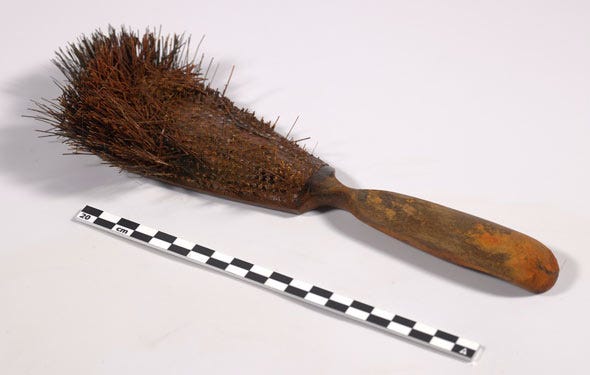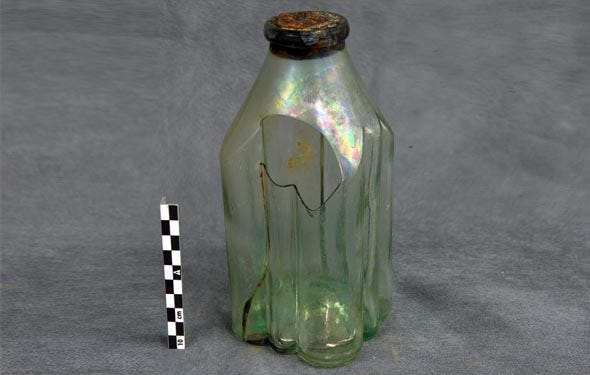There has been some fascinating history in the news this week. From the oldest evidence of Homo sapiens in northern Europe (45,000 years ago) to the discovery of a jade mask believed to have belonged to a Maya king.
Also making headlines was a warning from Parks Canada - the body, along with Inuit, in charge of excavating Sir John Franklin’s doomed ship HMS Erebus - that climate change and increasingly severe storms mean the shipwreck is in danger of deteriorating fast. Jonathan Moore, who leads the Erebus excavation team noted that “parts of the ship’s upper deck collapsed recently and other parts are sloping over dangerously”
Since it’s discovery in 2014, hundreds of artefacts have been recovered and examined including pistols, sealed medicine bottles, seamen’s chests, navigation equipment, leather shoes and fishing rods. All of which add depth and detail to the still mysterious circumstances that lead to the deaths of the crew of HMS Erebus and HMS Terror in the mid-19th century.
The History
The story begins on 19 May 1845, when HMS Erebus left England from Greenhithe, Kent, alongside its sister ship HMS Terror to explore the Canadian Arctic. At the helm of Erebus, and in charge of the overall expedition, was 59-year-old Sir John Franklin. A veteran of wars against Napoleonic France, who had been part of two previous expeditions to the Arctic, Franklin’s mission was twofold. First, he and his crew were to collect magnetic data. Second, they were to finally complete the legendary Northwest Passage - an Arctic route that links the Atlantic to the Pacific. To help push through the notoriously difficult ice, his ships had been fitted with steam-driven propellers. The vessels were also stocked with enough supplies to last three years. But the mission was to become a tragedy.
The ships were sighted at Baffin Bay in August of that year, but no news of their whereabouts reached England after that. With increased public concern, a three-pronged search effort was launched. A team was sent overland, and two expedition teams were sent by sea. Plus, a reward for information was offered, leading many independent ships to go in search of Franklin’s lost vessels and crew. By 1850, the first clues were discovered at Beechey Island when the graves of three crew members (John Torrington, John Hartnell and William Braine) were found. But what had happened to everyone else?
Part of the answer came in the 1850s when a Scottish surgeon named John Rae, who was part of the search team sent on land, spoke with local Inuit. He was told how the ships had become icebound near King William Island (in what is today the territory of Nunavut). The crew eventually abandoned the ships in April 1848 and attempted to make their way south in search of help. Franklin and a handful of others died at some point before then, so the survivors were led by Francis Crozier and James Fitzjames. But they were unsuccessful. With limited food and supplies, many died of starvation, others scurvy and / or hypothermia. One of the most disturbing revelations given to Rae was that some had turned to cannibalism to survive. In the end, everyone died.
Over the years, with the aid of Inuit, scattered relics and remains were found supporting the narrative given to Rae (including the discovery of bones with marks consistent with cannibalism), but the fate and location of the ships remained unknown. Into the void spilled speculation and literature - from plays by Wilkie Collins and Charles Dickens, to works by Jules Verne and Dan Simmons’s 2007 novel The Terror (adapted into a brilliant TV series in 2018).
Then, in 2014, after decades of modern searches, the HMS Erebus was finally discovered in shallow water in Wilmot and Crampton Bay. Followed two years later by the discovery of HMS Terror, 72 kilometres away in much deeper waters. It brought an end to 170 years of speculation, ratified the original Inuit testimony, and opened a whole new phase of understanding.
Back in 2020, HistFest spoke to Sir Michael Palin about the history of Erebus. Palin was in communication with the archaeological team while he wrote his acclaimed book, Erebus: The Story of a Ship. You can watch the interview below.







